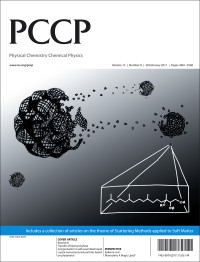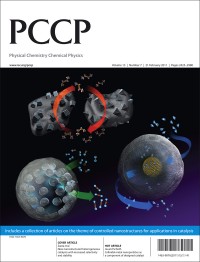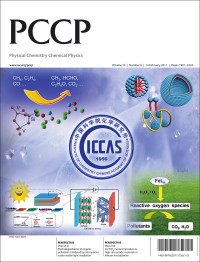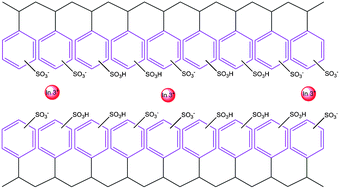PCCP Advisory Board member, Mike Ashfold’s research has featured on Science Express this week. The paper by Mike Ashfold, Andrew Orr-Ewing and colleagues, was a collaboration between the University of Bristol and the Rutherford Appleton Laboratory.
It is often difficult to get an accurate picture of the chemical dynamics of reactions that take place in solution, as the solvent also interacts with the system, which will often mask the true reaction free energy surface.
In this paper, they have compared the reaction of CN radicals with alkanes in the gas and solution phase, and using transient infrared absorption they have been able to observe the effect the solvent collisions have on the product’s vibrational motion.
Therefore, the transient infrared spectra can be used to probe solvent-induced modifications to the reaction free energy surface and chemical dynamics of reactions in solution.
Vibrationally Quantum-State–Specific Reaction Dynamics of H Atom Abstraction by CN Radical in Solution
Science, DOI:10.1126/science.1197796
You can also read more about their research in their recent PCCP Perspectives:
πσ* excited states in molecular photochemistry
Michael N. R. Ashfold, Graeme A. King, Daniel Murdock, Michael G. D. Nix, Thomas A. A. Oliver and Alan G. Sage
Phys. Chem. Chem. Phys., 2010, 12, 1218-1238
Velocity map imaging of the dynamics of bimolecular chemical reactions
Stuart J. Greaves, Rebecca A. Rose and Andrew J. Orr-Ewing
Phys. Chem. Chem. Phys., 2010, 12, 9129-9143
Comments Off on Unmasking the effects of solvent collisions
 PCCP is delighted to present issue 8, which includes a collection of articles on the theme of Scattering Methods applied to Soft Matter, Guest Edited by Professor Sandra Engelskirchen and Professor Chandrashekhar V. Kulkarni.
PCCP is delighted to present issue 8, which includes a collection of articles on the theme of Scattering Methods applied to Soft Matter, Guest Edited by Professor Sandra Engelskirchen and Professor Chandrashekhar V. Kulkarni.













 ‘HOT’ article
‘HOT’ article